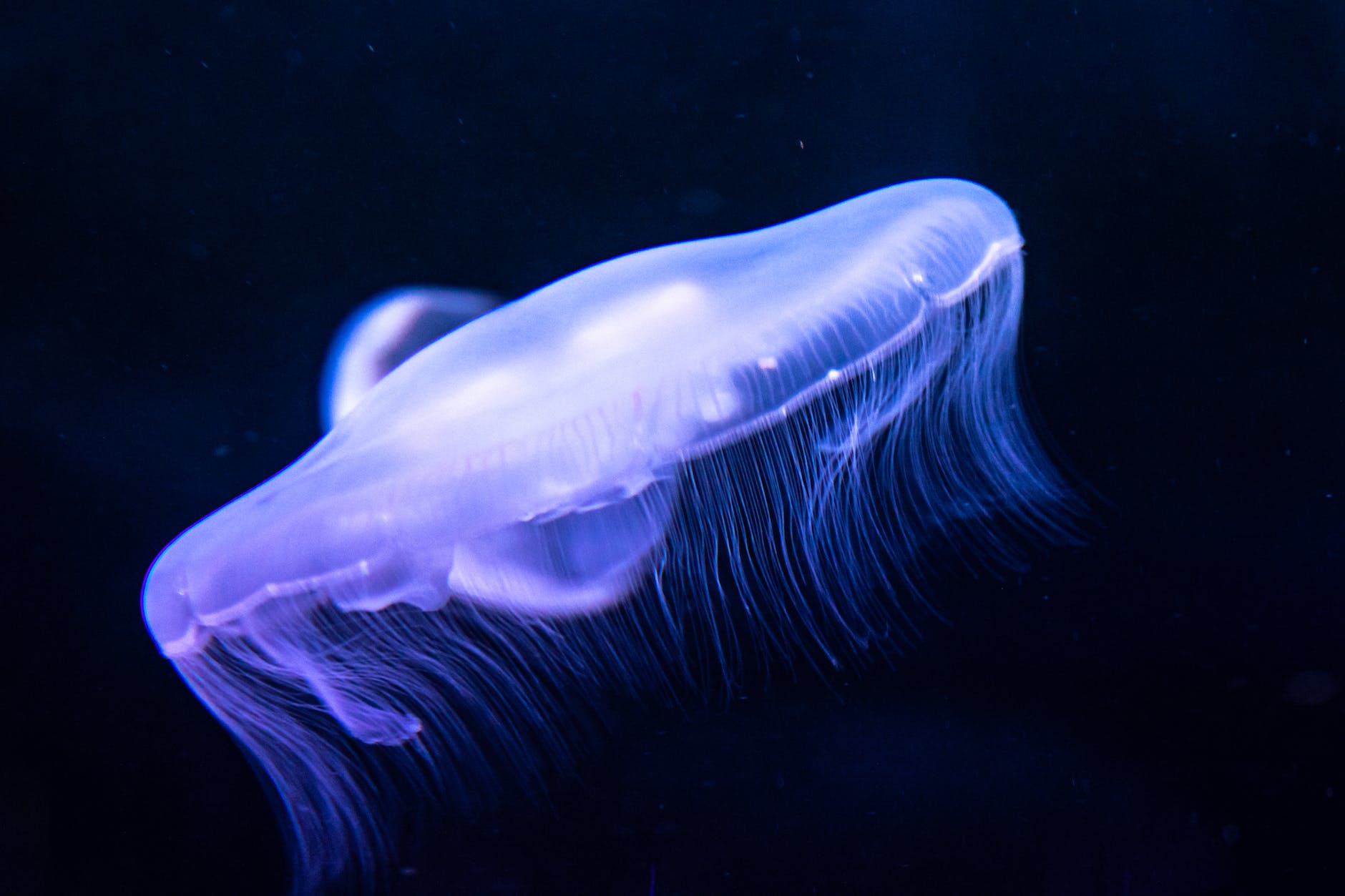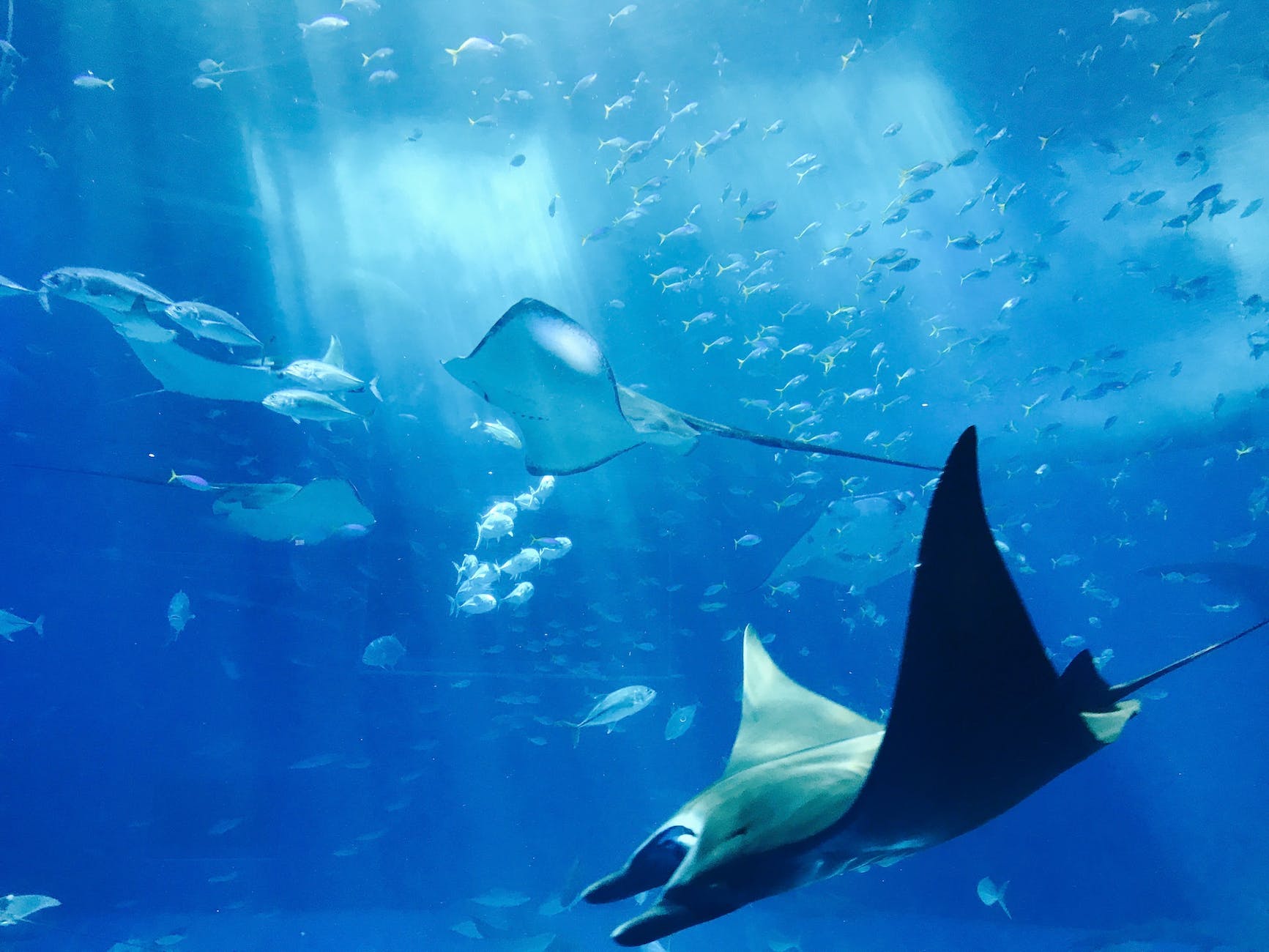Why Is My Jellyfish Sting Itching A Week Later: Unraveling The Mystery And Finding Relief
“Why Is My Jellyfish Sting Itching A Week Later?” If you’ve found yourself desperately typing this question into search engines, seeking an end to the persistent discomfort, you’re not alone. Prolonged itching after a jellyfish sting can be frustrating and perplexing.
The answer lies in various factors that can prolong the discomfort. It could be due to retained nematocysts, microscopic stinging cells left embedded in your skin, or even an allergic reaction to the jellyfish venom. Understanding these underlying causes is crucial to finding the right solution.
In this article, we’ll explore the fascinating world of jellyfish stings and uncover the secrets behind their prolonged itching. You’ll gain valuable insights into the normal healing process, discover factors that may contribute to prolonged discomfort, and uncover potential allergic reactions or bacterial infections.
Why Is My Jellyfish Sting Itching A Week Later
The persistent itching a week later after a jellyfish sting just like stingray can be attributed to factors such as retained nematocysts (stinging cells), allergic reactions to the jellyfish venom, or the presence of secondary bacterial infections.
The lingering itchiness experienced a week after a jellyfish sting can be attributed to several possible causes. Here are some of the reasons behind why a jellyfish sting may continue to itch for an extended period:
1. Retained Nematocysts
When a jellyfish stings, it releases microscopic stinging cells called nematocysts into the skin. In some cases, these nematocysts can become embedded and remain active, leading to ongoing irritation and itching. Scratching the affected area can exacerbate the problem by releasing more venom.
2. Allergic Reaction
Some individuals may have an allergic reaction to the venom injected by the jellyfish during the sting. This allergic response can result in prolonged itching and even more severe symptoms like swelling, rash, or difficulty breathing.
Allergies can vary in intensity, with some people being more sensitive than others.
3. Secondary Bacterial Infection
If the jellyfish sting was not properly cleaned or if scratching occurred, it could introduce bacteria into the broken skin. This can lead to a secondary infection, causing additional itching, redness, swelling, and potential discharge. Bacterial infections may require medical attention for proper treatment.
4. Sensitized Skin
In certain cases, the skin may remain sensitized or hypersensitive after a jellyfish sting. Even after the initial healing process, the affected area may continue to react to irritants or triggers, resulting in persistent itching.
5. Individual Healing Process
Each person’s body reacts differently to jellyfish stings, and the healing process can vary. While most jellyfish stings heal within a few days, some individuals may experience prolonged itching as part of their unique healing response.
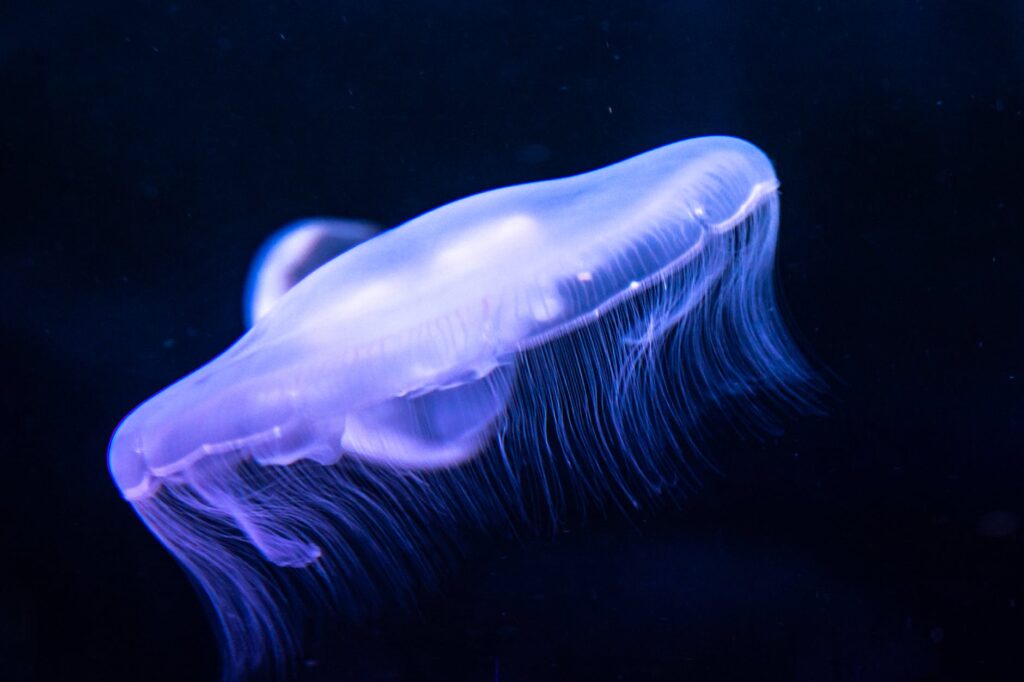
Understanding Jellyfish Stings
Jellyfish stings can be an unpleasant encounter for those who venture into the ocean. These fascinating creatures, known for their gelatinous bodies and trailing tentacles, have the ability to deliver a painful sting.
When a person comes into contact with a jellyfish, the tentacles can release venomous stinging cells called nematocysts, which inject toxins into the skin. This venom can trigger various symptoms and discomfort.
Common symptoms of a jellyfish sting include immediate pain or burning sensation at the site of contact, along with redness, swelling, and localized inflammation.
The affected area may develop a rash or small blisters. In some cases, you may experience itching or a prickling sensation as part of the healing process.
The duration of discomfort caused by a jellyfish sting can vary depending on several factors, such as the species of jellyfish, the amount of venom injected, and individual sensitivity.
Generally, mild to moderate symptoms subside within a few days to a week as the body’s natural healing processes take place. However, in certain cases, symptoms may persist for a longer period, requiring further attention and treatment.
It’s important to note that jellyfish stings can range in severity, with some species posing a greater risk and potentially leading to more severe reactions.
Understanding the basics of jellyfish stings, their symptoms, and the expected duration of discomfort can help individuals navigate these encounters and seek appropriate care when needed.
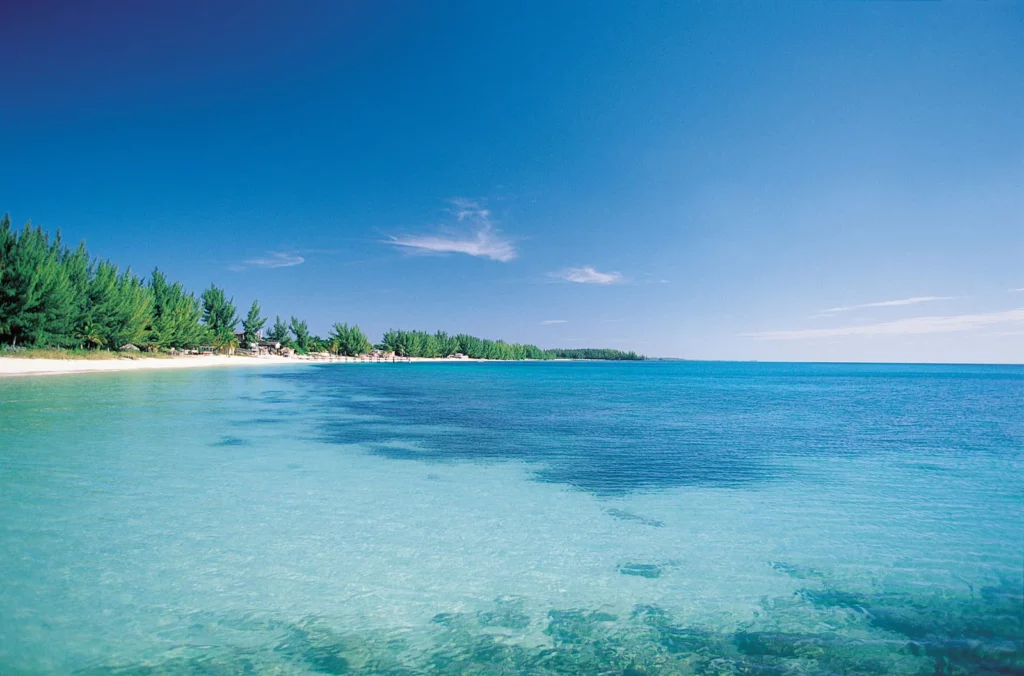
Immediate Treatment For Jellyfish Sting
Immediate treatment plays a crucial role in managing jellyfish stings effectively. Here are the recommended first-aid measures to follow:
1. Rinse with Seawater: As soon as possible, rinse the affected area with seawater to remove any remaining tentacles or stinging cells. Do not use freshwater or rub the area, as this can activate more venom and worsen the sting.
2. Tentacle Removal: If tentacles are present on the skin, carefully remove them using tweezers, gloves, or a similar tool. Avoid direct contact with bare hands to prevent further stings. It’s essential to remove the tentacles without squeezing or scraping them, as this can release more venom.
3. Vinegar Application: Applying vinegar to the affected area can help neutralize any unfired nematocysts (stinging cells) that may still be present.
Vinegar is believed to prevent the discharge of additional venom from the nematocysts, reducing the severity of the sting. Apply vinegar using a cloth or pour it directly over the sting site for around 30 seconds.
4. Hot Water Treatment: For certain jellyfish species, hot water treatment can be beneficial in inactivating the venom and relieving pain. Soak the affected area in hot water (around 45 degrees Celsius or 113 degrees Fahrenheit) for approximately 20 to 45 minutes.
Be cautious not to use excessively hot water that can scald the skin. Hot water treatment may not be suitable for all types of jellyfish, so local medical advice should be sought.
5. Pain Relief: Over-the-counter pain relievers like acetaminophen or ibuprofen can help alleviate pain and discomfort associated with the sting. Follow the recommended dosage instructions.
6. Seek Medical Assistance: In certain cases, it may be necessary to seek medical assistance, especially if the sting is severe, the pain is intense, or there are signs of an allergic reaction. Medical professionals can provide appropriate treatment and further guidance based on the individual’s condition.
Note that while these first-aid measures can help provide initial relief, it’s still recommended to consult a healthcare professional, especially if the symptoms worsen or persist beyond the expected healing time.
They can assess the severity of the sting and provide further guidance for proper care and management.
Jellyfish Normal Healing Process
Jellyfish stings typically follow a predictable healing process that involves several stages. While the exact timeline may vary depending on individual factors and the severity of the sting, here is a general overview of the normal healing process:
1. Immediate Pain and Swelling
Immediately after a jellyfish sting, you may experience intense pain, burning sensation, and localized swelling at the affected area. These initial symptoms can be quite uncomfortable and alarming.
2. Redness and Inflammation
Alongside the pain and swelling, the skin around the sting site may become red and inflamed. This is a common reaction to the venom injected by the jellyfish and is part of the body’s natural response to the injury.
3. Itching
As the initial pain and swelling begin to subside, itching may emerge as a prominent symptom. Itching is a common part of the healing process and indicates the body’s efforts to repair the damaged tissue.
4. Healing and Resolution
Over the course of a few days, the pain, swelling, and redness should gradually diminish. The body’s immune response helps in the breakdown and removal of venom components. The skin starts to heal, and the affected area may form a scab or develop a mild rash during this stage.
5. Complete Recovery
Within a week, most jellyfish stings should heal completely, with the symptoms subsiding entirely. The itching should diminish, and the skin should return to its normal appearance.
However, it’s important to note that individual healing times may vary, and some people may experience lingering itchiness or other symptoms for a longer period.
It’s worth mentioning that the healing process can be influenced by various factors, including the type of jellyfish, the amount of venom injected, your sensitivity or allergic reactions, and the promptness of first-aid measures.
If you notice any concerning or persistent symptoms, it is advisable to seek medical attention for proper evaluation and guidance.
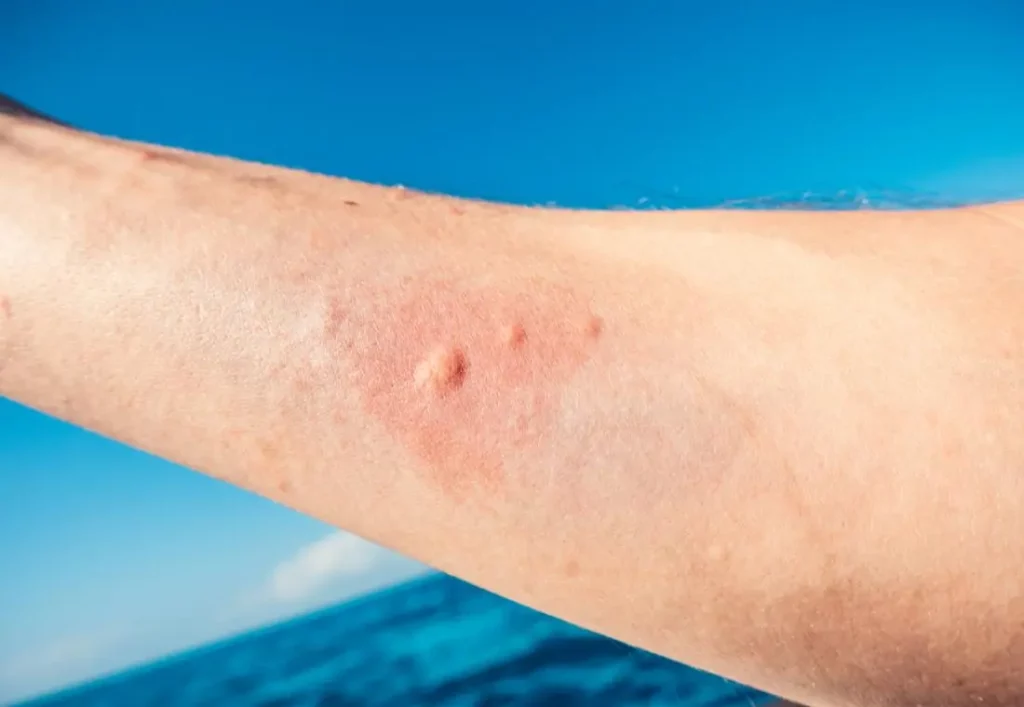
What Are The Symptoms Of A Delayed Jellyfish Sting Reaction?
Delayed jellyfish sting reactions can manifest with a variety of symptoms. These symptoms may appear hours or even days after the initial sting.
While the specific signs can vary depending on your sensitivity and the species of jellyfish involved, here are some common symptoms associated with delayed jellyfish sting reactions:
1. Persistent Itching: Itching that continues beyond the initial sting is a common symptom of a delayed reaction. The itchiness may persist for an extended period, even up to a week or more.
2. Rash or Hives: Development of a rash or hives on or around the sting site is another typical symptom. The affected area may become red, raised, and accompanied by itchiness or a burning sensation.
3. Swelling: Swelling around the sting site can occur as a delayed reaction. The affected area may become puffy, tender, and may extend beyond the immediate vicinity of the sting.
4. Pain or Discomfort: Delayed jellyfish sting reactions may also cause ongoing pain or discomfort at the sting site. The pain can range from mild to severe and may persist for an extended duration.
5. Systemic Symptoms: In some cases, delayed reactions can lead to systemic symptoms affecting other parts of the body.
These symptoms may include headache, muscle pain, joint pain, fatigue, fever, nausea, vomiting, or difficulty breathing. Severe systemic symptoms require immediate medical attention.
Note that not everyone will experience delayed reactions to jellyfish stings, and the severity and duration of symptoms can vary widely.
If you suspect a delayed reaction or experience concerning symptoms, it is recommended to seek medical evaluation for proper diagnosis and appropriate treatment.
Delayed Reaction To Jellyfish Sting Treatment (Why Is My Jellyfish Sting Itching A Week Later)
If you experience a delayed reaction to a jellyfish sting, it’s important to seek appropriate treatment. Here are some steps to consider for treating a delayed reaction to a jellyfish sting:
1. Medical Evaluation: If you develop symptoms hours or even days after a jellyfish sting, it is advisable to seek medical evaluation. Visit a healthcare professional who can assess your condition, determine the severity of the reaction, and provide appropriate treatment.
2. Allergic Reaction Management: If you are experiencing signs of an allergic reaction, such as difficulty breathing, swelling, or a rash spreading beyond the sting site, it may require immediate medical attention.
Call emergency services or go to the nearest emergency room for prompt treatment, including administration of epinephrine if necessary.
3. Medications: Depending on the nature and severity of the delayed reaction, a healthcare professional may prescribe medications to manage the symptoms. These may include antihistamines, corticosteroids, or pain relievers to alleviate itching, inflammation, and discomfort.
4. Topical Treatments: Topical creams or ointments may be recommended to soothe the skin, reduce inflammation, and relieve itching associated with the delayed reaction. Follow the application instructions.
5. Avoid Scratching: It’s important to resist the urge to scratch the affected area, as it can lead to further irritation, skin damage, and potential infection. Use gentle patting or cool compresses to alleviate the itch without causing harm.
7. Follow Medical Advice: Be sure to follow the treatment plan and advice provided by your healthcare professional. They may recommend specific care instructions or additional precautions to help manage the delayed reaction effectively.
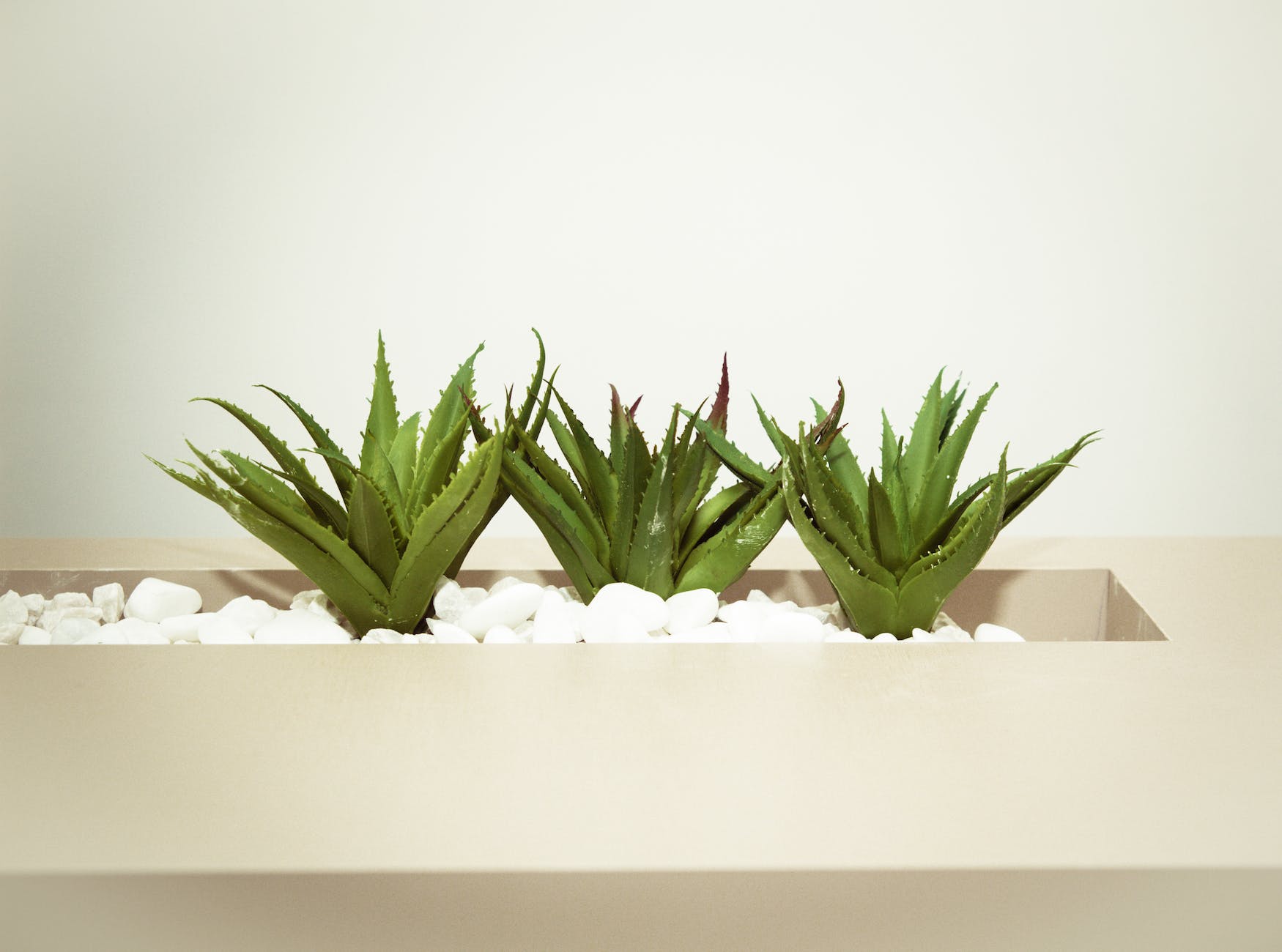
Jellyfish Sting Itch Treatment: What Can I Do To Relieve The Itch From A Jellyfish Sting?
When it comes to relieving itching caused by a jellyfish sting, there are several remedies and relief measures that you can try. Here is a range of options: To relieve the itch from a jellyfish sting, you can try the following remedies:
1. Topical Treatments: Over-the-counter hydrocortisone creams or calamine lotion can help alleviate itching and reduce inflammation. Apply them according to the product instructions.
2. Oral Antihistamines: Non-prescription oral antihistamines, such as cetirizine or diphenhydramine, can help relieve itching caused by allergic reactions. Follow the recommended dosage and consult a healthcare professional if you have any underlying medical conditions or are taking other medications.
3. Cool Compresses: Applying a cool compress to the affected area can help soothe the itch. Wrap ice or a cold pack in a thin cloth and gently place it on the sting site for short intervals.
4. Natural Remedies: Aloe vera gel, known for its soothing properties, can be applied to the sting area. Tea tree oil, with its anti-inflammatory and antimicrobial properties, may also provide relief. However, use natural remedies with caution and discontinue if any adverse reactions occur.
5. Avoid Scratching: Although it may be tempting, avoid scratching the sting area as it can worsen the itch and increase the risk of infection. Instead, gently pat or cool the area to alleviate the sensation.
6. Over-the-Counter Antihistamines: Non-prescription oral antihistamines, such as cetirizine or diphenhydramine, can help alleviate itching caused by allergic reactions. These medications work by reducing the body’s histamine response, which can help relieve itchiness.
Follow the recommended dosage instructions and consult a healthcare professional if you have any concerns or underlying medical conditions.
7. Cool Compresses: Applying a cool compress to the sting area can help alleviate itching and provide temporary relief. Wrap ice or a cold pack in a thin cloth and softly apply it to the affected area for short intervals. The cool temperature can help numb the area and reduce itchiness.
8. Medical Evaluation: If the itch persists, becomes severe, or is accompanied by worsening symptoms, seek medical attention for further evaluation and treatment.

When Should I See A Doctor About A Jellyfish Sting? (Why Is My Jellyfish Sting Itching A Week Later)
You should consider seeing a doctor about a jellyfish sting in the following situations:
1. Severe Symptoms
If you experience severe symptoms after a jellyfish sting, such as difficulty breathing, chest pain, dizziness, or signs of anaphylaxis (including swelling of the face, lips, or throat), seek immediate medical attention. These symptoms can indicate a severe allergic reaction and require prompt treatment.
2. Systemic Symptoms
If you develop systemic symptoms like fever, chills, muscle aches, joint pain, nausea, vomiting, or persistent headaches after a jellyfish sting, it is advisable to consult a healthcare professional. These symptoms may indicate an infection or a more severe reaction that needs medical evaluation.
3. Prolonged or Worsening Symptoms
If the symptoms from the jellyfish sting, including itching, pain, swelling, or redness, persist or worsen beyond the expected healing time, it is recommended to see a doctor. They can assess the situation, determine the cause of the prolonged symptoms, and provide appropriate treatment.
4. Signs of Infection
If the sting site becomes increasingly red, swollen, warm to the touch, or if you notice the presence of pus or increasing pain, it could indicate an infection. In such cases, it is important to seek medical attention for proper evaluation and management.
5. Pre-existing Medical Conditions
If you have pre-existing medical conditions, allergies, or are taking other medications, it’s advisable to consult a doctor after a jellyfish sting. They can assess the potential interactions or complications and provide tailored guidance or treatment.
Always err on the side of caution when it comes to seeking medical attention for jellyfish stings. If you have any concerns or uncertainties about your symptoms, a healthcare professional can provide the necessary evaluation and care to ensure your well-being.
RELATED: Are Water Shoes Necessary – Unlock the Secrets And Get the Facts
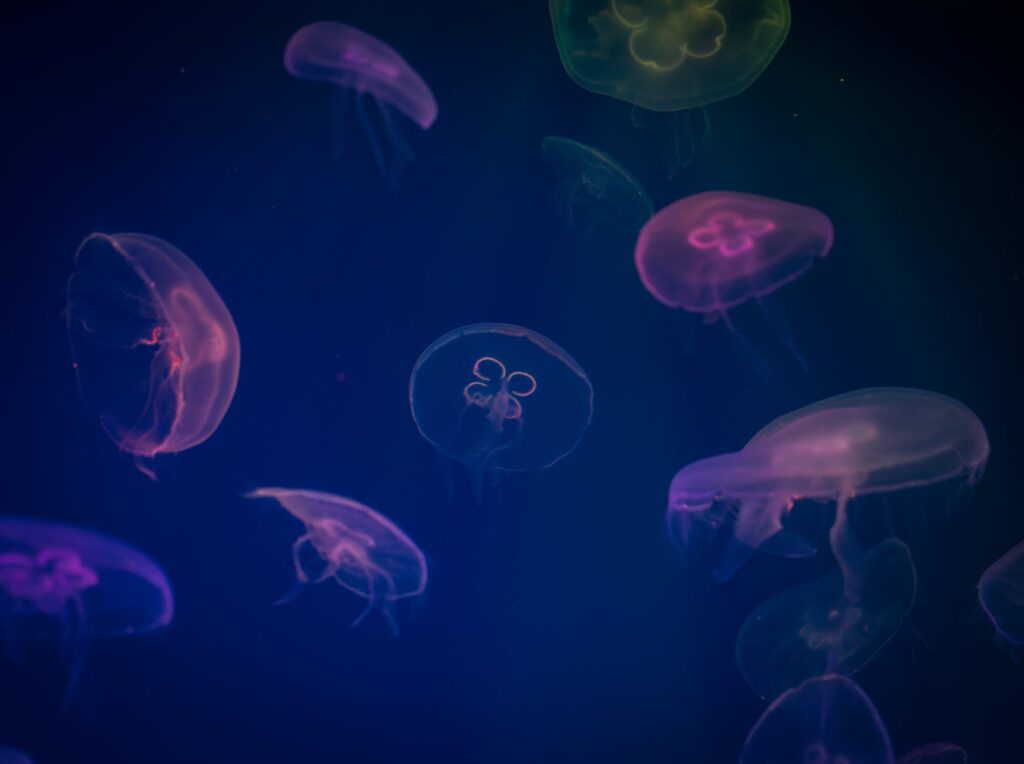
How To Avoid Jellyfish Stings In The Future (Why Is My Jellyfish Sting Itching A Week Later)
Preventing jellyfish stings is key to avoiding the discomfort they can cause. Here are some preventive measures and precautions to keep in mind:
1. Be Aware of Jellyfish Presence
Before entering the water, gather information about jellyfish presence in the area. Pay attention to local advisories, signs, or warnings regarding jellyfish sightings or increased activity. If there are reports of jellyfish in the vicinity, consider adjusting your swimming plans accordingly.
2. Wear Protective Shoes And Clothing
When swimming in areas known for jellyfish presence, wearing protective shoes and clothing can provide an additional layer of defense. Consider wearing a rash guard, wetsuit, or full-body swimsuit to reduce the amount of exposed skin and minimize the chances of coming into direct contact with jellyfish tentacles.
3. Use Appropriate Sunscreen
Apply sunscreen generously to all exposed areas of skin, including areas not covered by protective clothing.
Opt for a broad-spectrum sunscreen with a high SPF (Sun Protection Factor) to protect your skin from harmful UV rays. Ensure that the sunscreen is reef-safe and does not contain chemicals that may harm marine life.
4. Swim in Designated Areas
Whenever possible, swim in areas with lifeguards or designated swimming zones. These areas are often monitored for jellyfish activity and other potential hazards, providing an extra layer of safety.
5. Swim with a Friend
Swimming with a buddy is not only more enjoyable but also adds an extra level of safety. If one person is stung or experiences any distress, the other can help or seek help if needed.
6. Avoid Provoking Jellyfish
Keep a safe distance from jellyfish in the water. Avoid touching or provoking them, as they can release stinging cells even if they appear to be floating harmlessly. Be mindful of your surroundings and respect the natural habitats of marine creatures.
7. Obtain Local Information
When visiting a new beach or area, get local information regarding jellyfish activity and safety guidelines. Local authorities, lifeguards, or marine conservation organizations can provide valuable insights and advice on how to stay safe.
Antihistamine For Jellyfish Sting (Why Is My Jellyfish Sting Itching A Week Later)
Antihistamines can be used to help alleviate itching and reduce allergic reactions associated with a jellyfish sting. Here are some important considerations regarding antihistamines for jellyfish stings:
1. Over-the-Counter Antihistamines: Non-prescription antihistamines, such as cetirizine (Zyrtec), diphenhydramine (Benadryl), or loratadine (Claritin), are commonly available and can be used for mild to moderate itching caused by a jellyfish sting.
These antihistamines work by blocking the effects of histamine, a chemical released during an allergic reaction, which helps relieve itchiness.
2. Dosage and Instructions: Follow the recommended dosage instructions provided on the packaging or consult a pharmacist for guidance. It’s essential to use antihistamines according to the appropriate age group and individual needs.
3. Individual Sensitivity: Everyone reacts differently to medications, including antihistamines. While most people tolerate over-the-counter antihistamines well, some individuals may experience side effects such as drowsiness or dry mouth.
If you have any pre-existing medical conditions or take other medications, consult a healthcare professional or pharmacist to ensure the antihistamine is safe for you.
4. Allergic Reactions: If you experience signs of an allergic reaction, such as difficulty breathing, swelling, or a rash spreading beyond the sting site, it may indicate a severe allergic response that requires immediate medical attention.
Antihistamines alone may not be sufficient to manage these severe reactions, and you should seek emergency medical assistance.
5. Consultation with a Healthcare Professional: If you have any concerns or uncertainties about using antihistamines for a jellyfish sting, it is recommended to consult a healthcare professional.
They can provide personalized advice based on your specific situation, medical history, and any potential interactions with other medications you may be taking.
Jellyfish Sting Rash Spreading (Why Is My Jellyfish Sting Itching A Week Later)
If you notice a jellyfish sting rash spreading beyond the initial site, it could be a sign of an allergic reaction or a secondary skin infection. Here are some important considerations regarding a spreading rash from a jellyfish sting:
1. Allergic Reaction: A spreading rash may indicate an allergic reaction to the jellyfish venom. In some individuals, the immune system can overreact to the venom, leading to a more extensive rash or hives that extend beyond the initial sting site.
If the rash is spreading rapidly, accompanied by swelling, difficulty breathing, or other severe symptoms, it may indicate a severe allergic reaction (anaphylaxis) that requires immediate medical attention.
2. Medical Evaluation: It is important to seek medical evaluation if the jellyfish sting rash is spreading beyond the initial site.
A healthcare professional can assess the severity of the reaction, determine the cause, and provide appropriate treatment. They may prescribe antihistamines, corticosteroids, or antibiotics, depending on the specific situation.
4. Avoid Scratching: It’s crucial to resist the urge to scratch the affected area, as scratching can worsen the rash, lead to further skin damage, and increase the risk of infection. Use gentle patting or cool compresses to alleviate itchiness without causing harm.
5. Follow Medical Advice: Be sure to follow the treatment plan and advice provided by your healthcare professional. They may recommend specific care instructions, medications, or further tests to address the spreading rash effectively.
Jellyfish Sting Blisters Treatment (Why Is My Jellyfish Sting Itching A Week Later)
If blisters develop after a jellyfish sting, it’s important to handle them with care and provide appropriate treatment. Here are some considerations for treating jellyfish sting blisters:
1. Leave Intact if Possible: If the blisters are intact and not causing significant discomfort, it is generally best to leave them intact. Blisters act as a natural protective barrier for the underlying skin, reducing the risk of infection.
2. Cleanse the Area: Gently cleanse the area surrounding the blisters with mild soap and water. Pat the area dry using a clean towel or gauze. Avoid rubbing or scrubbing the blisters to prevent their rupture.
3. Avoid Popping the Blisters: It is important to resist the temptation to pop or rupture the blisters, as it can increase the risk of infection and delay the healing process. Popped blisters should be treated like an open wound, kept clean, and covered.
4. Topical Antibiotic Ointment: If the blisters do rupture or there is a risk of infection, consult a healthcare professional for appropriate guidance.
They may recommend applying a topical antibiotic ointment to the affected area to help prevent infection. Follow their instructions regarding application frequency and duration.
5. Keep the Area Clean and Covered: After cleansing, apply a sterile non-stick dressing or bandage to the blistered area. This will protect the skin, prevent further irritation, and reduce the risk of infection. Change the dressing regularly as per healthcare professional’s instructions.
6. Pain Relief: Over-the-counter pain relievers such as acetaminophen or ibuprofen can be used to alleviate pain or discomfort associated with the blisters. Do not exceed the recommended dosage.
7. Medical Evaluation: If the blisters are large, painful, show signs of infection (increased redness, warmth, pus), or if you have any concerns about their progression or healing, it is advisable to seek medical evaluation.
A healthcare professional can assess the condition, provide appropriate treatment, and guide you on further care.
The Bottom Line On Why Is My Jellyfish Sting Itching A Week Later
So, if you are looking for an answer to “why is my jellyfish sting itching a week later,” you have the answer now. Understanding why your jellyfish sting may continue itching a week later is essential for finding relief and ensuring a smoother healing process.
By following appropriate remedies, seeking medical attention if needed, and taking preventive measures, you can alleviate the discomfort and enjoy the waters without worrying about prolonged itching from jellyfish stings.
Remember, knowledge and proactive care are key to turning that itch into a distant memory.
